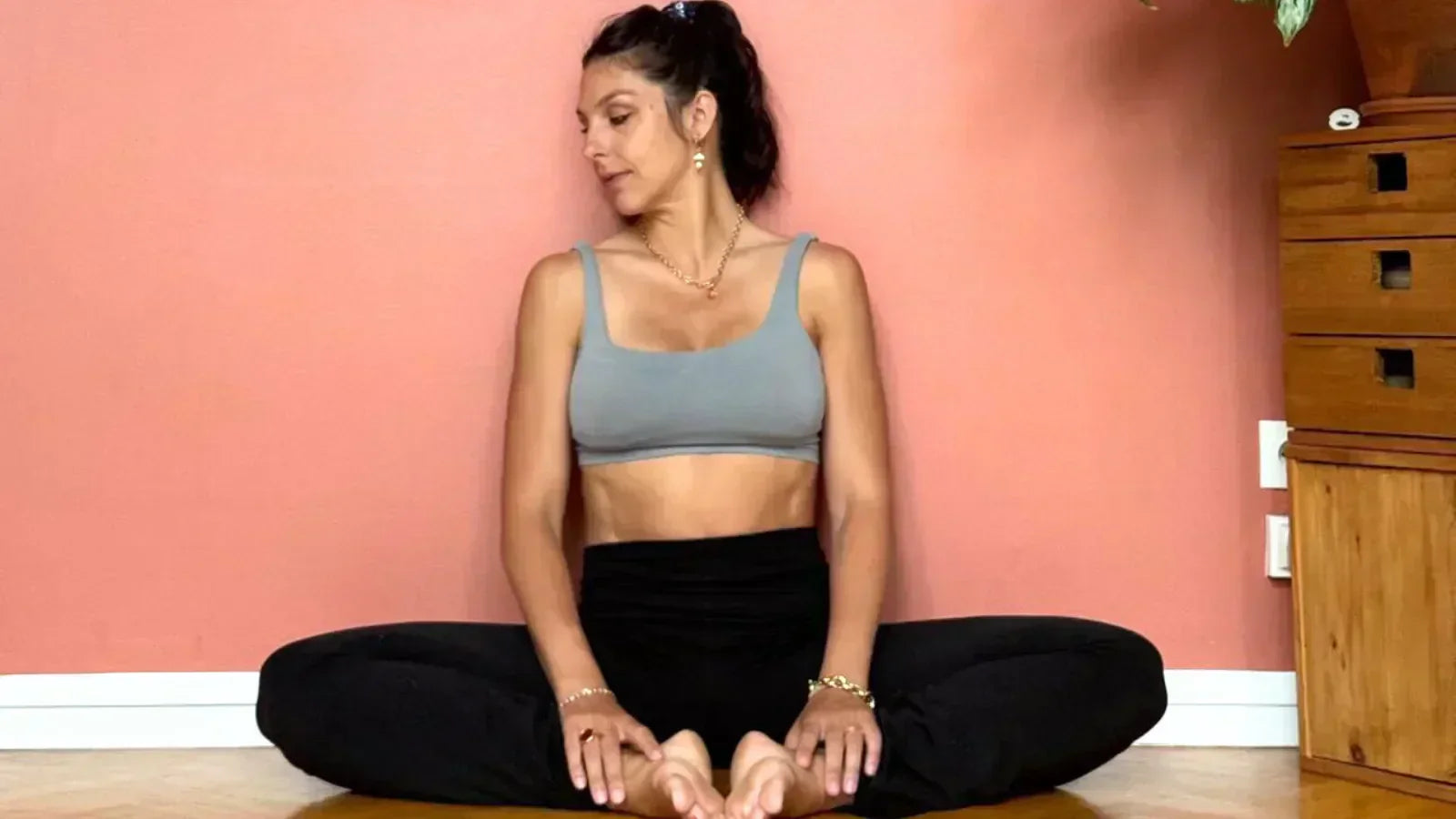Pregnancy is a unique time in a woman’s life, marked by many physical and emotional changes. To navigate this transformation more smoothly, prenatal yoga offers a gentle and well-suited practice that promotes well-being and helps prepare for childbirth. In this article, discover the benefits of prenatal yoga, recommended poses, and practical tips to integrate it into your daily life.
What is prenatal yoga?
Prenatal yoga was popularized in France in the 1980s by Bernadette de Gasquet, a doctor and yoga teacher. Her approach combines adapted poses, breathing exercises, and pelvic floor work to help expectant mothers experience a more serene pregnancy. She also introduced the now-famous exercise ball (or Swiss ball) into maternity wards—an essential tool today to ease labor pains and promote pain-relieving positions.
When should you start prenatal yoga?
You can start prenatal yoga at any point during your pregnancy. However, certain precautions should be taken depending on the trimester:
First trimester: Movements should be very slow, gentle, and in tune with how your body is evolving.
Second trimester: You can begin incorporating exercises focused on strengthening the pelvic floor and improving posture.
Third trimester: The focus shifts to deep breathing and relaxation to better prepare for childbirth.
The most important thing is to listen to your body and avoid forcing yourself into any pose that feels uncomfortable.
Are there any contraindications for prenatal yoga?
Prenatal yoga is rarely contraindicated. While some healthcare professionals advise against practicing it during the first trimester, others believe it can be beneficial as long as it's gentle and adapted. In any case, it’s best to consult your doctor or midwife before starting.
Good news: it’s also possible to continue practicing after birth with postnatal yoga—an ideal practice to support gentle recovery.
The benefits of prenatal yoga
Better stress and emotion management
With hormonal fluctuations, it’s normal to feel stressed or moody. Thanks to breathing and meditation techniques, prenatal yoga helps recentre, relax, and strengthen the bond with your baby.
Relieve pain and prepare the body for childbirth
Yoga poses help stretch and strengthen the muscles of the back, hips, and pelvic floor. The result: fewer backaches and improved posture for a more comfortable daily life.
Improve circulation and breathing
By encouraging deep, mindful breathing, prenatal yoga optimizes oxygen flow for both mother and baby. It also helps reduce the feeling of heavy legs and swelling.
Create connections and meet other expectant mothers
Prenatal yoga classes are not just about self-care. They’re also a great opportunity to meet other pregnant women, share experiences, and talk about this unique time.
What type of prenatal yoga is recommended?
Prenatal yoga is mainly based on Hatha yoga, a gentle practice combining breathing techniques and poses adapted to the needs of pregnant women. It’s a fully adjusted form of yoga tailored to the body’s changes during pregnancy.
Which prenatal yoga poses can you do during pregnancy?
1. Butterfly pose (Baddha Konasana)
Ideal for loosening the hips and relieving tension, this pose is done by sitting on the floor with the soles of the feet together and knees open. Simply hold the position while breathing deeply.

2. Cat-cow pose (Marjaryasana-Bitilasana)
Perfect for releasing the spine and easing lower back tension, this pose alternates between arching and rounding the back while synchronizing with the breath.


3. Goddess pose (Utkata Konasana)
This standing pose—feet wide apart and knees bent—strengthens the legs and pelvis while stimulating energy and self-confidence.

Tatiana, demonstrating the poses here, is wearing our Everyday bra — stretchy, soft, and designed to follow every breath and every stretch.
Conclusion
Prenatal yoga is a wonderful way to experience pregnancy gently, relieve tension, and prepare your body for childbirth. Beyond physical benefits, it’s also a special time to connect with yourself and your baby. No matter where you are in your pregnancy, it’s never too early—or too late—to start. Why not try your first session this week?
And to support these moments of reconnection and well-being, having comfortable, soft, and suitable lingerie makes a real difference. At Mama Hangs, the Everyday collection was designed to support expectant mothers throughout pregnancy: ultra-soft fabrics, zero-constraint support, adaptive cuts… And if you’re planning to breastfeed, you can already turn to our absorbent nursing bras and bralettes, which combine comfort, practicality, and innovation. All of them were created to simplify your daily life and gently support every stage of motherhood.
FAQ – Prenatal yoga and pregnancy
Can I practice prenatal yoga as a beginner?
Yes, prenatal yoga classes are beginner-friendly, as they are gentle and adapted to each pregnant woman’s pace.
How many times per week should I practice prenatal yoga?
1 to 2 times per week is a great rhythm, but the most important thing is to listen to your body.
Can I continue after giving birth?
Yes, with postnatal yoga, which helps restore the pelvic floor and promotes relaxation.

